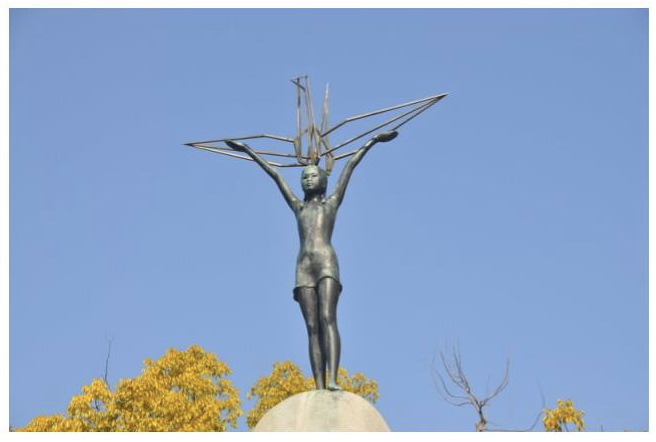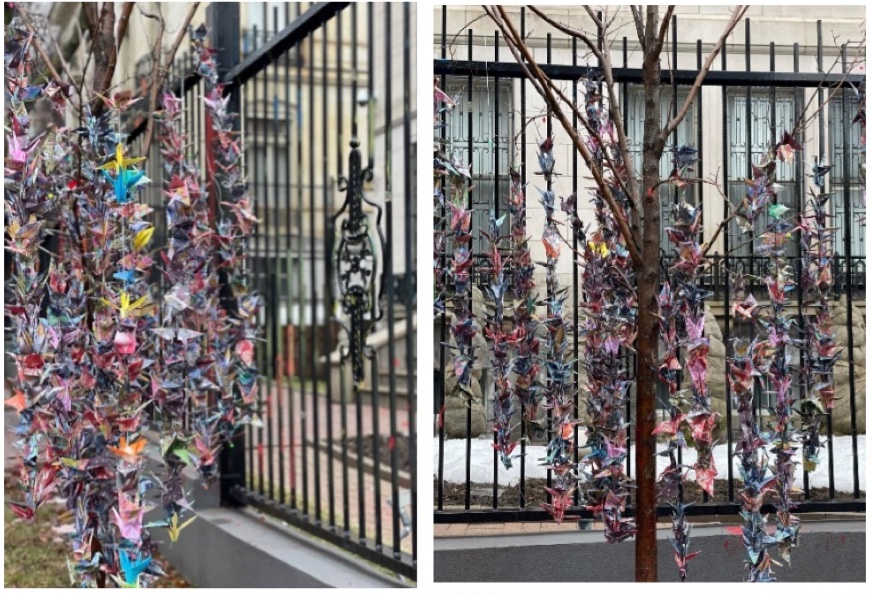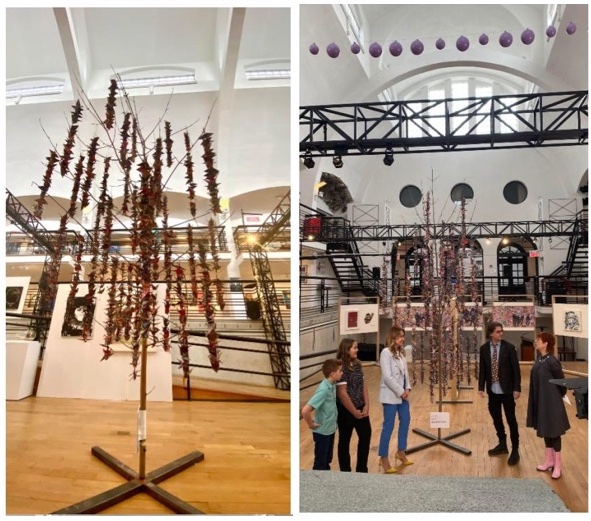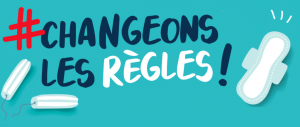One Thousand Paper Cranes at Our School Library
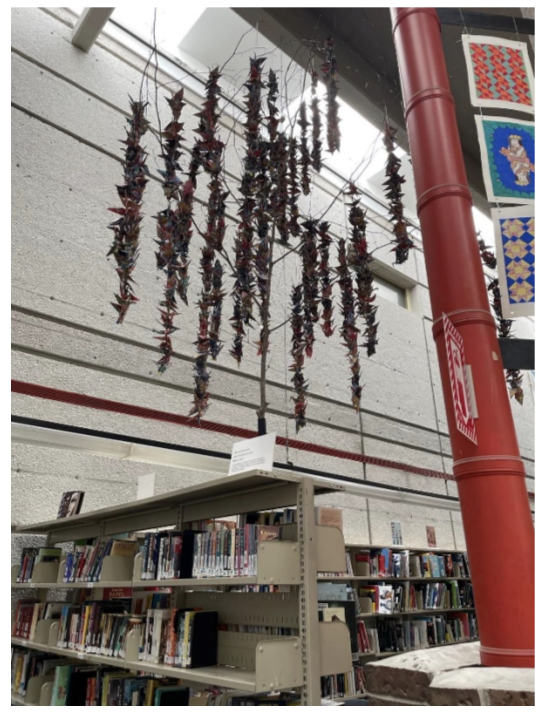
On August 6th, 1945, the Americans dropped a nuclear bomb over the Japanese city of Hiroshima. That day, 80 000 people tragically lost their lives. Three days later, another bomb was dropped. This time the city of Nagasaki was the target. In only three days, around 140 000 people died because of the explosions. During the following months, people continued to die from radiation sickness, burns and other injuries.
Sadako Sasaki was one of the victims of the aftereffects of the bomb. She was a normal little Japanese girl that lived in Hiroshima. She was only 2 years of age at the time of the explosions but, luckily, she and her family survived. After the war, Sadako grew up like a regular child and she seemed to have a very bright future ahead of her. It was only in 1954, almost 10 years after the end of the war, that she started to develop health problems. She was hospitalised and, shortly after, she was diagnosed with leukemia. According to the doctors, Sadako had only one year left to live.
According to the Japanese legend, if anyone folds 1000 paper cranes, they will be granted a wish by the gods. Sadako gave herself a goal of making 1000 origami cranes so that her wish comes true. Her wish was simply to live. She started folding the paper cranes. During the following months, Sadako used every piece of paper she could find. She even used gum or medicine wrappings. Sadly, on October 25th 1955, Sadako died in her sleep at the Hiroshima Red Cross hospital. She didn’t reach her goal since she had only folded 644 paper cranes. Her classmates decided to complete the rest of the project in her memory. One thousand origami cranes were buried with Sadako.
After her death, her older brother wrote a book to tell her story to the English-speaking world. Sadako became an international symbol of peace. In 1958, a statue of her holding a paper crane was made in the Hiroshima Peace Memorial Park to commemorate her and all the people that lost their lives during the war. Her memory is also honored during the anniversary of the Hiroshima bombing on august 6th (the annual Peace Day in Japan).
On February 25th, 2022, the war between Ukraine and Russia started. Russia invaded Ukraine and it was very devastating for the Ukrainian people. Luckily, a lot of people decided to help. One of them was Olga Reshetnikova, a secondary 1 English teacher at our school. Miss Olga was inspired by Sadako’s story, and, like Sadako, she and her students made a wish: to stop the war in Ukraine. They started folding the paper cranes and successfully made 1000 of them.
After her students finished folding their last paper crane, Miss Olga went to the Russian consulate in Montreal and hung the garlands with paper cranes on a tree that was in front of the consulate.
That was their way of sending their message for peace. Sadly, the strings with paper cranes were removed by the employees of the consulate by the end of the day. The journalists that were present saw what happened and talked about it on the news.
A popular Quebec show Infoman heard about the story of one thousand paper cranes and they decided to include it in their yearly art exhibition of the world social and political events. They called Miss Olga and asked her and her students to, once again, fold 1000 paper cranes. Miss Olga accepted and, after folding the origami cranes for the second time with her students, the tree with the cranes was reproduced in the museum and then talked about on the show. Miss Olga and two of her students were also invited to be a part of the filming process.
After the exhibition, Infoman gave the paper cranes back to our school. Miss Olga and her colleagues decided to use them by installing a tree with the cranes in the library. It is mounted on a shelf to create an illusion of the paper birds floating in the air. There is an inscription on the base of the tree that says: ‘This is our cry. This is our prayer. Peace in the world’. The same words are inscribed on the Children’s Peace Monument in Hiroshima in Sadako’s memory.
One thousand paper cranes traveled all the way from Armand Corbeil high school to the Russian consulate, a trash can, the museum and then back to school to prove that even in sad times there is hope that kindness wins.
By Amalia Oprea groupe 1-75
À propos de l'auteur(e)


